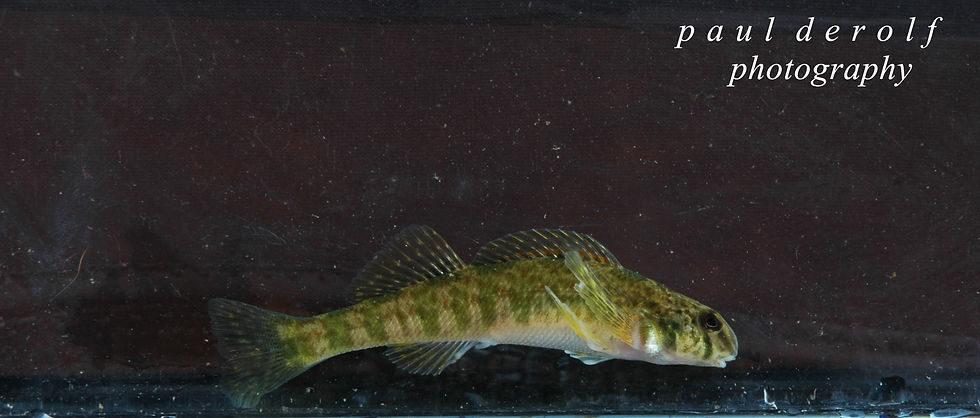Greenside Darting Your Way
- Paul DeRolf
- Oct 18, 2020
- 2 min read
One of the first species that grabbed my attention within stream systems, the Greenside Darter (Etheostoma blennioides) is a vivid example of why we need to protect these special waters. Described in 1819 by biologist Constantine S. Rafinesque, this species was compared to the colorful Mediterranean fishes known as blennies, hence the name "blennioides." Early naturalists would use the genus name Etheostoma to describe species as "Hogfish," and due to the appearance of our friend here their original name was "Bluntnose Hogfish." Within the range there are reports of variation between specimens so two sub-specific types arose, Lake Erie populations and a "prairie" type, which have some subtle characteristic differences.

Common when found, they occur in just about any sized system, besides headwaters that are intermittent during the summer. Greensides occupy areas with moderate flow and large rocks covered in algae or moss. the algae covered rocks serve multiple purposes that support the life of Greenside Darters. Looking at the individual above, one can assume that they use these areas as cover to hide from predators.

A second reason for this habitat choice is their diet. Greenside Darters insectivores/invertivores, meaning they eat a variety of aquatic insects. These micro meals primarily come from the within the algae and on/under the rocks themselves. Mayfly, Stonefly, and Caddisfly larvae live in the same spots as the Darters and in high densities at that. If you're able to find a riffle with Greensides in it, consider being very patient and flip or scrape a couple rocks to watch them move into the area and have a feast!

The final reason for living near or under the algae covered substrate is for breeding/mating. Similarly to birds or just about any other animal, Greenside Darter males color up in a brilliant combination of green with red-orange spots. Brighter and larger males have a better chance of attracting more females to their nesting spot(s). Once a female enters the nest, they lay small clumps of viscous eggs which attach to the algae. The flowing water will keep the eggs cool and well-oxygenated until they hatch.

Thanks to FishMap you can see the wide range of waterways that are occupied by the Greenside Darters! Next time you want to go play in a stream, take some time and be on the lookout for these amazing fish! Maybe they'll get you o-FISH-ally hooked into the wonderful underwater world!




Comments